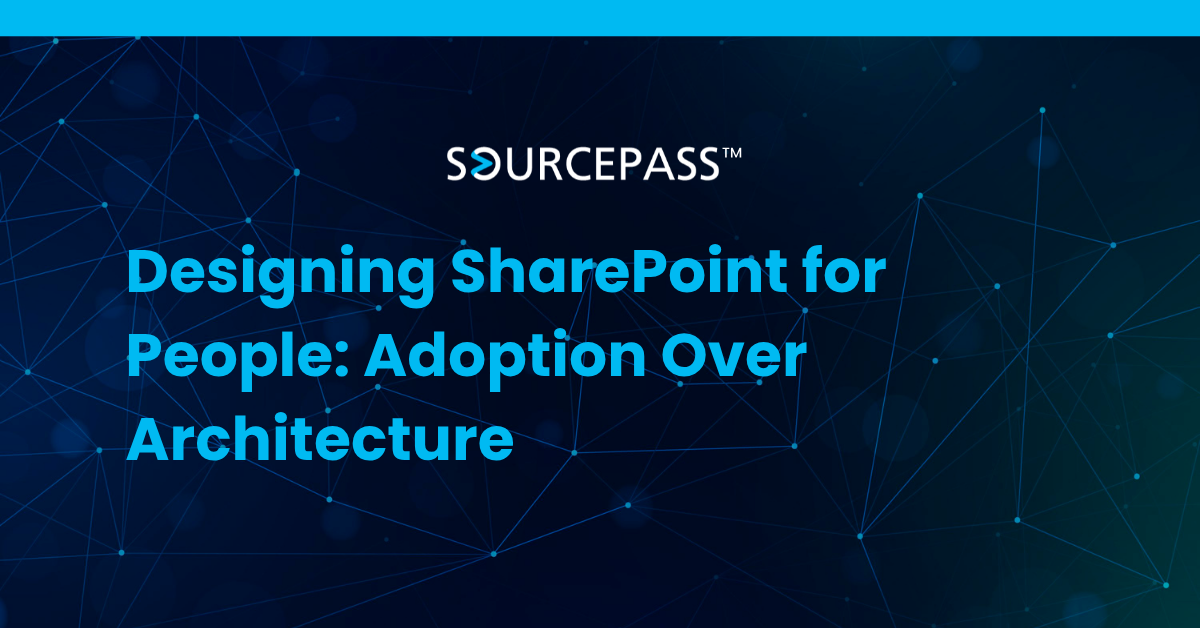Designing SharePoint for People: Adoption Over Architecture
Oct 24, 2025 Alex Davis Microsoft SharePoint & Teams 2 min read



SharePoint offers extensive capabilities, but its impact depends on how well employees actually use it. Many organizations focus on features and technical architecture, only to discover low engagement and workarounds. True success with SharePoint comes from prioritizing the human experience—designing for how teams work, communicate, and collaborate.
Why User Adoption Matters More Than Features
SharePoint fails when it feels complex or disconnected from daily workflows. Even the most capable platform goes unused when it isn’t intuitive. Designing for adoption leads to stronger engagement, fewer data silos, and better collaboration across departments. A people-first approach reduces reliance on shadow IT and strengthens data governance.
Understanding the Human Side of SharePoint
The human side of SharePoint emphasizes usability, clarity, and cultural alignment. Instead of building around menus and libraries, you design around real employee needs. When SharePoint reflects how teams operate, it becomes a trusted workspace rather than a mandatory tool.
How to Design SharePoint for Adoption and Alignment
1. Start with User Research
Gather insights from employees through surveys, interviews, or workshops. Understand how they store files, communicate, and manage projects. Their input informs site structures, content organization, and feature priorities.
2. Simplify Navigation and Structure
Avoid deep hierarchies and confusing labels. Use clear naming conventions, logical grouping, and role-based homepages to help users find information quickly without frustration.
3. Focus on Core Features That Solve Pain Points
Prioritize essential capabilities such as document version control, integrated Teams communication, and automated workflows using Power Automate. Introduce additional features gradually based on demand.
4. Provide Training and Ongoing Support
Offer role-specific training sessions, quick guides, and support channels. Encourage departmental champions to promote best practices and answer questions within their teams.
5. Enable Feedback and Continuous Improvement
Monitor usage patterns, gather feedback, and iterate. A flexible SharePoint environment evolves with the organization and sustains engagement over time.
Aligning SharePoint with Company Culture
SharePoint should reflect your organization's identity. Use consistent branding, incorporate leadership updates, and highlight employee stories. Create spaces for community, recognition, and informal collaboration. When SharePoint mirrors company culture, employees develop a stronger sense of connection and ownership.
Business Benefits of Designing for Adoption
Organizations that design for adoption, not just architecture, experience measurable impact:
-
Higher engagement and platform utilization
-
Reduced email volume and fragmented tools
-
Stronger governance and data security
-
Faster knowledge transfer and onboarding
-
A scalable digital workplace that adapts to growth
Final Thoughts
Technical success is only part of the equation. SharePoint becomes a strategic asset when it serves the people who rely on it. By focusing on usability, culture, and continuous improvement, you create a platform that employees want to use—not one they have to use.
FAQ: SharePoint Adoption and Usability
How do I improve SharePoint adoption in my organization?
Start by involving employees early, simplifying site design, and offering training that matches their daily workflows.
What causes low engagement with SharePoint?
Complex navigation, unclear content structure, and a lack of alignment with how teams actually work are common causes of low adoption.
Can SharePoint be customized for different departments?
Yes. SharePoint supports audience targeting and role-based experiences to deliver tailored content to different departments and job functions.
How does culture impact SharePoint success?
When SharePoint reflects company culture through branding, communication, and recognition, it feels more relevant and encourages long-term engagement.
Is training necessary after launch?
Ongoing training and support are essential. Adoption improves when employees understand how to use SharePoint effectively and see regular value in the platform.
Subscribe To
Sourcepass Insights
Sourcepass Insights
Stay in the loop and never miss out on the latest updates by subscribing to our newsletter today!
.png?width=500&height=100&name=White%20Logo%20-%20Transparent%20Tag%20(3).png)



